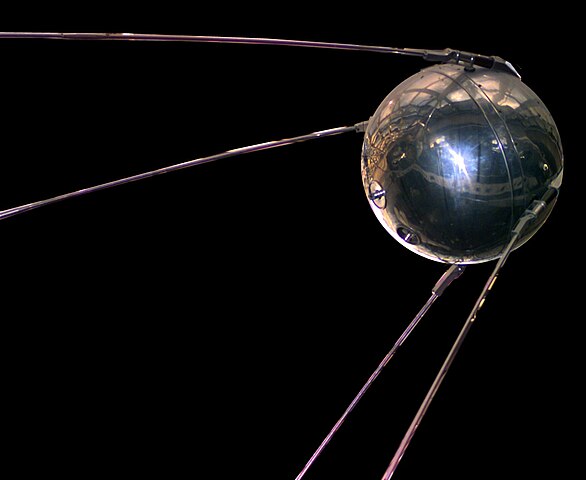The "Space Age" began in 1957 when the U.S.S.R. launched Sputnik 1 in space. Sputnik 1, a early version of a communications satellite, was outfitted with four antennae which would be used to transmit radio pulses. Sputnik 1's mission was to observe and record various types of information about the atmosphere, and to test how radio waves will propagate through the Earth's atmosphere.
Luckily for us, Sputnik 1's mission revealed that radio waves can most certainly travel through the Earth's atmosphere. This piece of information was proven after Sputnik 1 transmitted a few radio pulses after reaching orbit and scientists and engineers detected these radio pulses back on Earth.
This scientific breakthrough by scientists and engineers led to a exploding demand for communication technologies. This demand led to the modern age reliance on satellite communication. In today's world, communication satellites are used in everything from GPS to television. However, as more and more technologies are being developed, the demand for faster communication is increasing. There is also a fear that all feasible RF (radio frequency) communication bands are being claimed by nations and/or companies. These two issues are leading to the next big breakthrough: optical fiber and free space optical communication.
Free space optical communication systems, also know as laser communication or lasercom, were first demonstrated for space applications in the 1990s. After these demonstrations, space agencies around the globe scrambled to research and develop this technology. Finally, in 2013, NASA connected to a probe orbiting the moon via lasercom and set up a downlink with a bandwidth of 622 MB/s, error free. The speed of this communication was revolutionary, and now NASA, along with the European Space Agency (ESA), is developing more applications for space-to-space and space-to-earth applications.
 |
| Sputnik 1 (source: Wikipedia) |
This scientific breakthrough by scientists and engineers led to a exploding demand for communication technologies. This demand led to the modern age reliance on satellite communication. In today's world, communication satellites are used in everything from GPS to television. However, as more and more technologies are being developed, the demand for faster communication is increasing. There is also a fear that all feasible RF (radio frequency) communication bands are being claimed by nations and/or companies. These two issues are leading to the next big breakthrough: optical fiber and free space optical communication.
Free space optical communication systems, also know as laser communication or lasercom, were first demonstrated for space applications in the 1990s. After these demonstrations, space agencies around the globe scrambled to research and develop this technology. Finally, in 2013, NASA connected to a probe orbiting the moon via lasercom and set up a downlink with a bandwidth of 622 MB/s, error free. The speed of this communication was revolutionary, and now NASA, along with the European Space Agency (ESA), is developing more applications for space-to-space and space-to-earth applications.
No comments:
Post a Comment